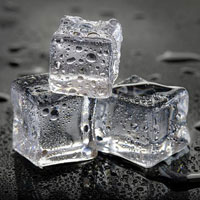Coolants and Refrigerants You Can Use to Ship Perishables
 When shipping perishable goods such as certain foods or medical products, you need to make sure they are kept in certain temperature conditions throughout the transit, otherwise they can deteriorate. There are several types of coolants and refrigerants you can use to keep perishables cold or even frozen and prevent deterioration.
When shipping perishable goods such as certain foods or medical products, you need to make sure they are kept in certain temperature conditions throughout the transit, otherwise they can deteriorate. There are several types of coolants and refrigerants you can use to keep perishables cold or even frozen and prevent deterioration.
There are three main options you can choose from to maintain the right temperature inside the package: wet ice, dry ice, and gel packs. Wet ice is your good old regular ice. Some carriers allow to use it as a refrigerant, but wet ice has a number of disadvantages: it is heavy (and most carriers charge by weight, so using wet ice as a coolant might hike up your shipping costs) and it melts, so you will need to make doubly sure that your package is well-insulated to prevent leakage. Finally, wet ice might be fine for overnight domestic shipping, but it is not an option for international shipping.
Gel packs and dry ice are the two preferred options for keeping perishables cold or frozen. Dry ice is the solid form of carbon dioxide that is commonly used as a coolant. The main advantage of dry ice compared to wet ice is that it does not melt; it evaporates without turning into a liquid, so there won’t be any leakage. In addition, carbon dioxide freezes at a very low temperature (about −109°F or −78 °C), which means it is extremely efficient at keeping frozen items, well, frozen.
However, every medal has its reverse, and the key advantages of dry ice are also its main disadvantages. Due to its extremely low temperature, dry ice is dangerous to handle; you must not let it come in contact with your skin if you don’t want to get frostbite. The fact that dry ice sublimates, i.e. goes directly from the solid to the gas stage without turning into a liquid, also makes it dangerous. If the shipping container is airtight, carbon dioxide gets trapped inside, resulting in building pressure.
Because of this, dry ice is classified as a hazardous material by the IATA (International Air Transport Association). This means that your shipment containing dry ice must comply with the IATA hazardous and dangerous goods regulations. For instance, it must be packaged according to a specific instruction to prevent pressure buildup and requires an air waybill.
In addition, the package must be clearly labeled as containing dry ice; the marking must include the name of the substance (“dry ice/carbon dioxide, solid”), its UN number (UN 1845), and the net weight of dry ice in the package. The amount of dry ice you will need to use depends on the size of the items you’re shipping, the type of insulation, and the amount of time the package will spend in transit. Dry ice isn’t generally considered a hazardous material when it comes to ground shipping, but the package still needs to be marked as containing dry ice.
Finally, gel packs are portable bags filled with refrigerant gel. They’re generally the easiest, safest and most affordable solution for keeping perishables cold while in transit. Their freezing temperature is lower than the freezing temperature of water ice, but not low enough to make them dangerous to handle or for them to freeze perishables that need to be kept cold but nor frozen.
How many gel packs do you need to use in order to keep the perishables in your package sufficiently cold? The rule of thumb is 1 lb of cold packs per 3 lbs of perishable items. You can use more cold packs than necessary just to be on the safe side, but this will make your package heavier and increase your shipping costs.
To put a long story short, your go-to coolant and refrigerant options when shipping perishables are gel packs and dry ice. Gel packs are the way to go when shipping items that need to be kept cold but not frozen, and dry ice is the best option for shipping frozen foods.
However, dry ice is a dangerous substance that must be handled and packed with the utmost care, and this is something you must never forget. Regardless of what type of coolant/refrigerant you use, you need to pack your shipment according to the carrier’s guidelines for this particular type of coolant or refrigerant.